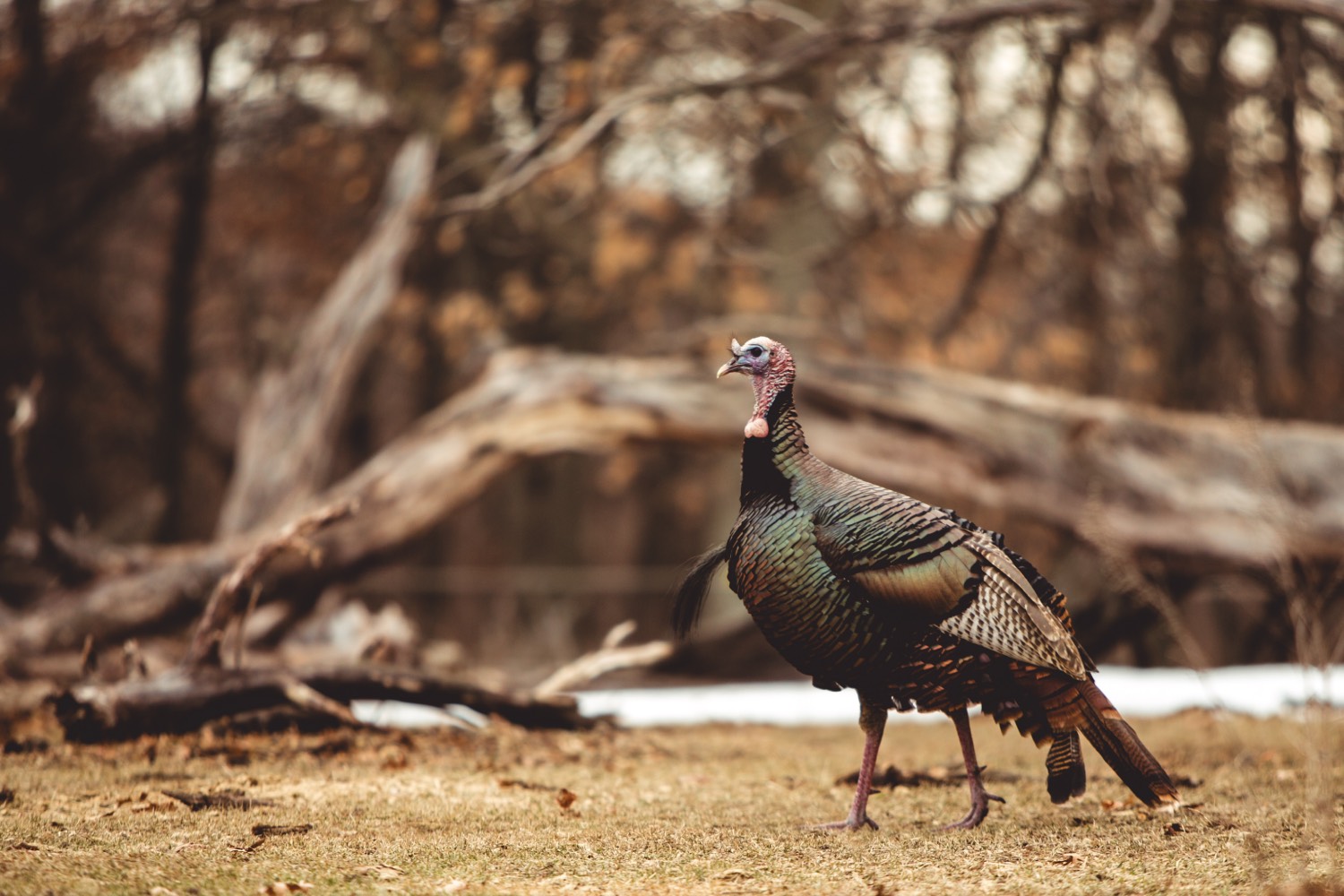
Photograph by Levi Glines
Heath Wood
Give Gobblers the Silent Treatment
After a morning of close encounters and one miss, the opening day of Missouri’s youth season was not going as planned. Moments after flying off the roost, the young boy I mentored that morning shot at his first turkey. Unfortunately, his nerves got the best of him, and he hit a couple of feet to the left of where he was aiming.
On our first morning of the two-day youth season, we began by hunting a family friend's farm. Yet, after a miss and a couple of close calls, the following morning, we traveled a short distance to a popular piece of public land that had attracted many turkey hunters over the years. It was now mid-morning, and we had arrived on public land. Because of the common hunting pressure for that area, I decided to move in as quietly as possible, hoping we could find a lonely tom ready to play the game. We heard a tom gobble at a nearby crow as we eased our way down an open fence row. Normally, I would have hurried to set up and begin calling. Instead, I let the surrounding natural sounds give up the location of the tom as we inched our way closer. Every time a crow, woodpecker, or other natural sound occurred, the tom would respond by gobbling. In a forty-five-minute period, we had made our way within seventy-five yards of the alone tom. When we reached the point where we risked being seen, I put the boy in my lap and made a soft hen yelp on my diaphragm call. A few seconds later, I spotted the full fan of the strutting gobbler coming over the hill a mere twenty yards away. The boy connected with his shot when the tom's head became visible.
In recent years, the popularity of hunting public land has dramatically increased, resulting in more hunters in these areas. As with the piece of land that the young boy and I hunted, turkeys can become more challenging to call into close range when one area has more hunting pressure. When turkeys are stubborn to respond to calls, using the silent treatment can often be the turning point in harvesting a mature gobbler.
Navigating Public Land for Turkeys
When public land sees a higher volume of hunters, it is common for turkeys to become hard to hunt. The challenging traits of public land gobblers often result from hunters using the same routes and pressuring the same specific areas. To increase the odds, taking the road less traveled or longer route can often result in better odds.
The popularity of using canoes and kayaks to paddle into an area farther than those hunters who are walking has increased recently. Hunters have found they can travel on small creeks and rivers more quietly than when walking. Fewer hunters will intensify their effort this much to travel further, so turkeys are found using this method; they will often be more likely to respond to calls.
Another great way to quietly travel a longer distance onto public land at faster times is by using a bicycle or an electric bike. Hunters can wear a turkey vest such as the Blocker Outdoors Finisher Pro II Turkey Vest and safely pack all their gear while riding into their designated hunting area. Traveling by water or biking into an area creates a silent way to cover much ground, which gets the hunter away from the pressure and closer to big gobblers.
Public Land Turkeys Midday Strategies
My grandfather always gave me a hard time about getting up too early to chase a gobbler. For many years he chose to sleep in and go hunting later in the morning. When he made it to the woods, he would ease his way down old logging roads and trails or take the occasional slow walk through the woods, waiting to hear a gobble. Unlike myself, grandpa would never use a call or locator call. Instead, he walked slowly, stopped often, and would always listen closely.
Grandpa's style of hunting was often practiced when hunting on public land. After several years of gaining hunting experience, I have adopted many of his ways when hunting public lands.
Finding a gobbler can become much easier by being patient throughout the morning and slowly easing your way around a hunting area. The middle of the day can often be a great time to find a gobbler who is fired up. By this time, many hunters have left the area to return to their daily work schedule or have given up for the day and returned home. Another great thing about mid-days is that the hen turkeys return to their nest during the day. When fewer hunters are walking around, and the hens have left all the toms to lay on their eggs, gobblers can become lonely and eager to find love. As with the youth hunt, if hunters let the natural sounds of spring give up the location of nearby gobblers, they can silently move their way in closer, then call to bring them in the rest of the way.
Read More: The Sportsman's Primer for Public Land and Water
Sometimes it is easy to forget that turkey hunting can be challenging, especially on public land; hunting pressure can alter a turkey's daily routine. When turkey hunting gets tough or challenging, I often refer to one of my favorite bible verses when my daily walk becomes challenging. Psalms 46:10 says, “Be still, and know that I am God.” As life troubles can be fixed by simply being quiet and staying still, so can that of turkey hunting trials. Sometimes being quiet and letting mother nature do the work can be the best medicine for success.































